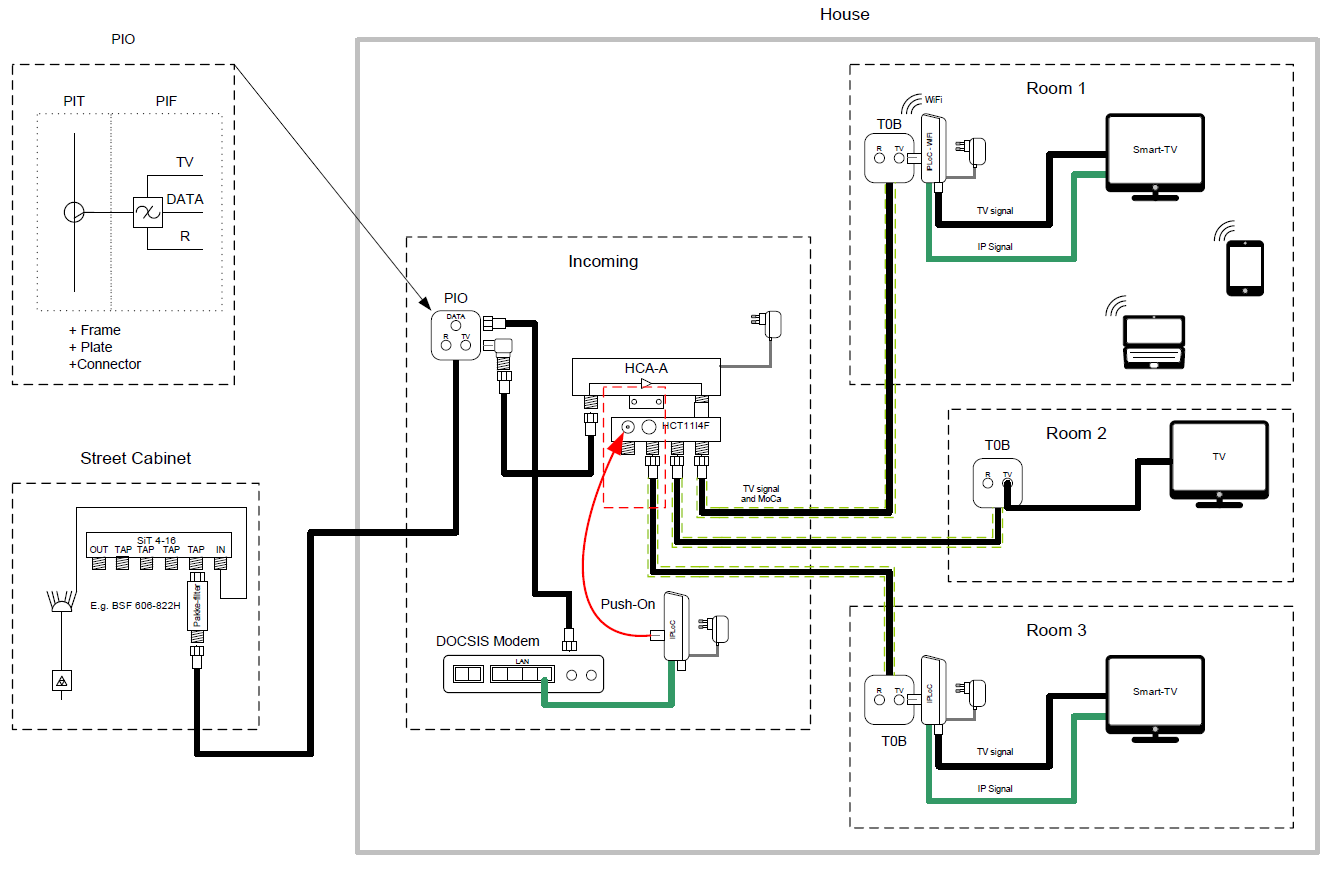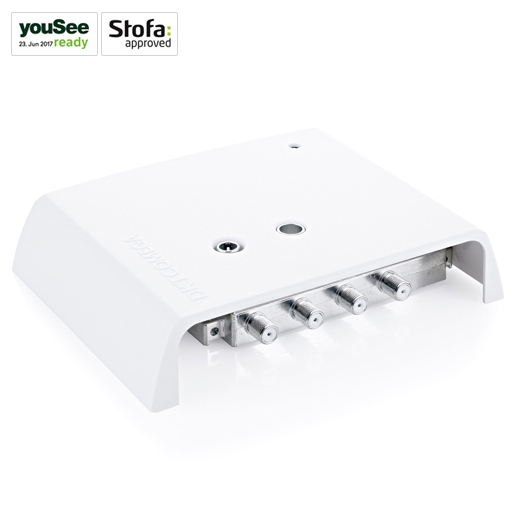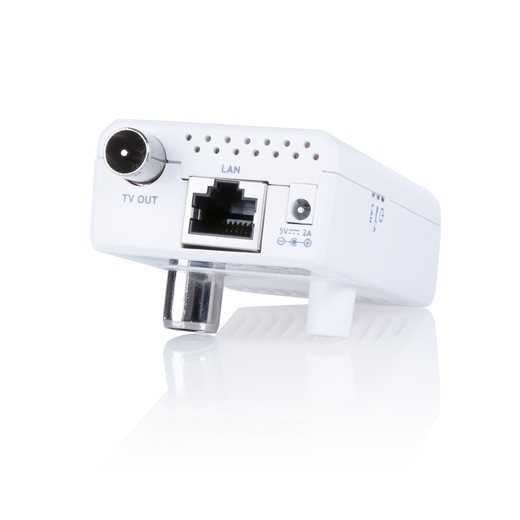Worth knowing about amplifiers and signal sharing
Understand your cable TV network
It important to understand how a network functions when trying to understand why an amplifier is necessary. The best analogy is to regard a network as a water supply. There are lots of cables that must transport the signal from your operator to your TV, in a similar way that a water works sends water to water outlets through a piping system. The more closely the network is put together, the better the signal. In the same way as pressure in a water supply drops if the pipes are leaky.
In a cable TV network, the TV signal and internet signal are sent in the same cables, but on different frequencies. The illustration below depicts how a signal is packed prior to YouSee and Stofa making their Gigaspeed upgrade, and how the signal will be packed from now on. Very simply, to achieve an optimal TV signal every dot must land in its respective square. If this does not occur then customers will experience problems with the signal. The upgrade has been made to have far more broadband throughput in the existing cables.
Forward path amplification
An antenna amplifier ensures that signals retain their strength in the household. They are used when multiple TV sets use the signal. This is because the signal value is reduced by the cables, sockets and branches in the household. As the signal level delivered to the household is optimized so that it has a suitable level for correct TV reception, the amplifier must regulate for losses in the home network. A good rule of thumb is that an amplifier is required if there is more than one socket with a TV output in the house.
Forward path linearity
The number of channels in a cable TV network can vary from a few to full exploitation of the TV frequency range. Furthermore, there are also broadband services that fill a part of the forward path frequency spectrum. To ensure a good TV signal, the amplifier must compensate for this and also ensure linearity in the signal strength. This is so there are no unnecessarily large fluctuations and it therefore must remain in a determined linearity window.
Automatic Gain Control (AGC)
AGC in the amplifier ensures that a signal is adjusted in relation to signal strength and forward path amplification. This occurs in a way so the signal is ensured its strength. As a customer this means that one does not need to fiddle with the installation. It occurs automatically. On amplifiers without AGC there are small switches that are used to adjust the amplification upwards and downwards, all according to how the signal is in the household. DKT Home always recommends that the antenna amplifier can adjust itself automatically. Generally this is valid for too little and too much signal that would destroy image quality and the 47:74 DbµV window on each socket.
Should the signal’s input level change, for example if work is performed on the cable TV network, then using amplifiers without AGC can result in a variation of such a degree that it no longer is within the window. This is avoided by using an amplifier with AGC.
Installation
Depicted below is how an installation of a home network will appear in relation to the standards and demands made by YouSee and Stofa. Here the amplifier is connected to the delivery point, the same place where the router is connected. In this way one is ensured that the signal and return path are optimal.

Why DKT HCS 1-4 or 1-8?
We have designed our amplifiers so they are optimized for the new demands and standards of YouSee and Stofa with regard to upgrading of the network. Furthermore, we have ensured two important aspects that significantly differentiate us from other amplifiers on the market. The first is Auto Gain Control (AGC), which ensures that you cannot adjust the amplifier. Secondly, we have optimized the electronics to handle the increased complexity of future signals, and you are therefore ready for internet distribution via MoCA accessories. Combined this means that no attention is required when set up. You only need to be excited about the good future-secured TV signals.



